
Enterprise companies serve a large number of stakeholders, internal and external, and due to their size often carry a lot of influence in their industry and deal with large amounts of complexity.
While enterprise product managers use similar tools as others and follow similar processes, they often customize their tools and processes to meet their needs. The same for their roadmaps.
This article will focus on enterprise product roadmaps, their importance, and best practices to follow when crafting them with some examples.
Why are roadmaps important?
Product roadmaps communicate the strategic objectives of a business and how they plan to evolve their products to reach these goals.
Some of the benefits of roadmaps include:
Streamlining team alignment
Shaped by input from various stakeholders, the roadmap ensures that your entire team shares a common understanding of the mission, goals, and key objectives for the year.
Defining product direction
The roadmap serves as guidance on how your company will evolve its product in the short or long term. It's about positioning your product in the market, highlighting its unique features, and distinguishing it from competitors.

Securing stakeholder support
Gain support from internal stakeholders as you show them how the roadmap aligns with departmental goals, and/or use it to retain customers who may consider churning due to unmet needs.
Resource Planning
The roadmap helps manage resources and adapt to new initiatives during the quarter, supporting discussions on resource allocation.
How enterprise roadmaps differ from other roadmaps
There are multiple types of roadmaps, each with their own purpose.
These types include:
… and more
Enterprise companies craft roadmaps that address their unique challenges and daily complexities serving large, diverse, and sometimes regulated customers in different regions.
They leverage the same types of roadmaps as other businesses but modify them to meet their needs.
What Roadmaps do enterprises use? And why?
Outcome-based roadmap
This roadmap begins with the product vision and progresses to specific deliverables that bring that vision to life.
In a structured sequence, it communicates the product vision, followed by the goal, the intended outcome (with metrics), and expected deliverables.
It serves as a valuable tool for conveying how delivered items align with the product and company vision and the prioritized objectives.
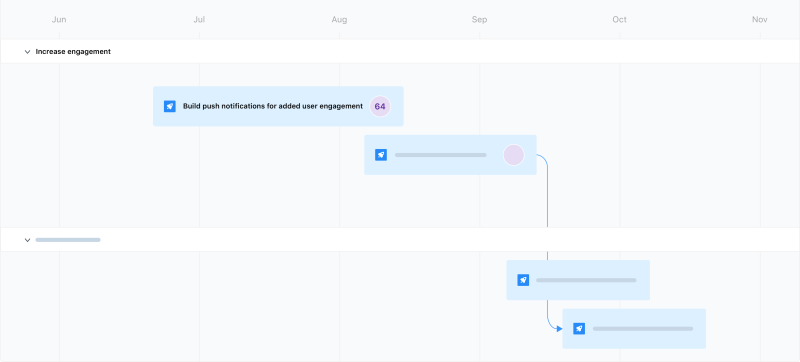
Business roadmap
A business roadmap outlines a business's long-term strategic plans, distinct from a detailed business plan. It focuses on high-level strategies and overarching objectives.
Benefits of this roadmap include future planning, priority setting, and vision establishment. This roadmap also fosters alignment among stakeholders regarding specific goals and serves as a record of successful endeavors.
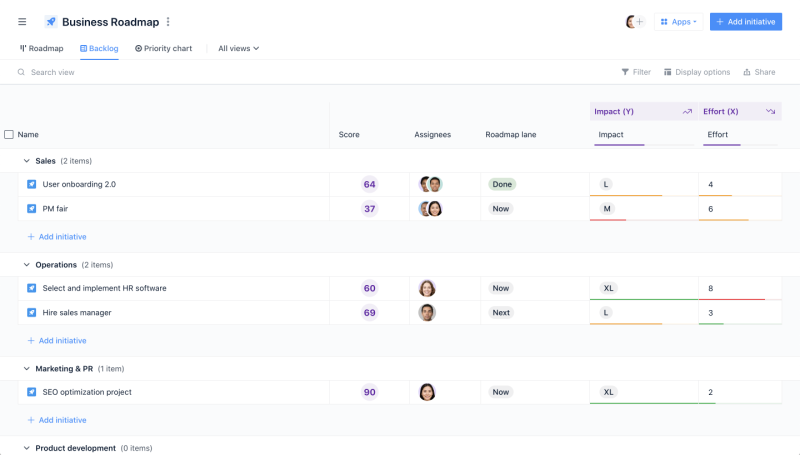
Timeline roadmap
A timeline-based roadmap is similar to a project plan. It lists strategic priorities for the product with their sequence and timelines.
It is a reference for internal team members and customers to track work and anticipate completion, and is often presented in quarters and months.
This roadmap is compatible with various roadmap types, including feature-based, product launch, and OKR roadmaps.
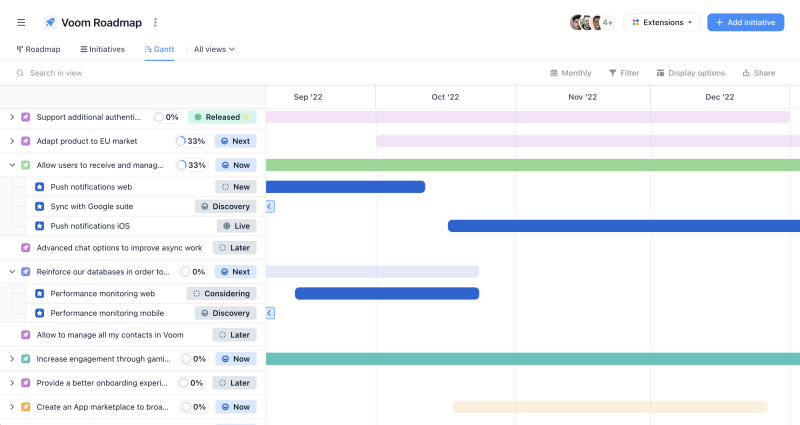
Technology roadmap
This roadmap outlines a business's software strategy. It outlines changes in technology to the internal team and aids in decision making and trade-off discussions around the technology infrastructure.
Enterprise companies rely on this roadmap to ensure that their technology infrastructure supports their product offerings.
While this roadmap is mainly shared internally, the information can be shared with strategic customers upon request.
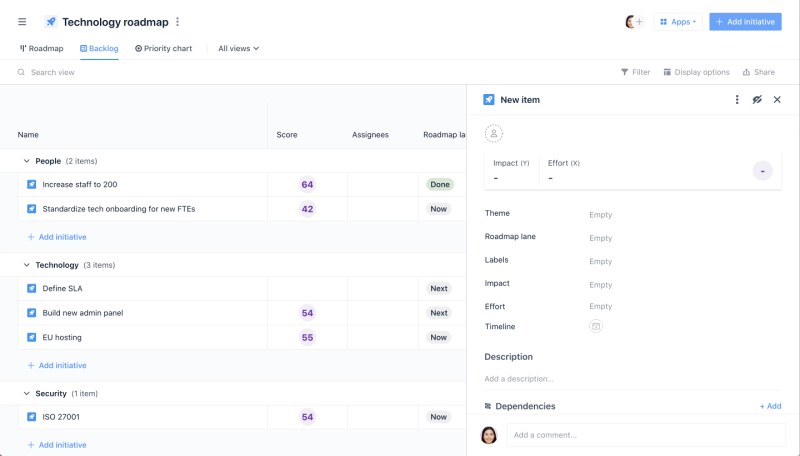
How to create roadmaps for enterprise businesses
The development of enterprise product roadmaps involves input from various stakeholders, including customers.
Throughout the product lifecycle, stakeholders provide feedback for product improvements. Product teams should maintain a central location for storing this feedback, complete with requester details, reasons, priorities, and more.
Next is to prioritize initiatives considering many factors including:
Business objectives
Stakeholder input
Expected value
Resource constraints
Strategic alignment
This is a collaborative process, involving input from multiple teams, departments, and partners.
While these stakeholders provide input, the final decision on what makes it onto the roadmap rests with the product manager.

Best practices when building an enterprise product roadmap
To craft an enterprise roadmap that aligns your team, sets clear expectations, and drives your company toward its goals, here are some 3 best practices to keep in mind.
Prioritize users and customers
Your enterprise product roadmap should primarily address the needs of users and customers who drive the most value for your business.
Understand their requests, provide accessible information, organize by themes, and structure by a timeline to clarify when they can benefit from releases.
Create an executive-friendly roadmap
Business executives of enterprise companies are often swamped with responsibilities, so they need concise information.
Focus on key initiatives, delivery timelines, critical dependencies, risks, and milestone dates.
Clearly articulate how these initiatives align with each department's goals by understanding business objectives, gathering input, and involving stakeholders in prioritization discussions.
Leverage a timeline-based roadmap
A timeline-based roadmap displays initiatives in a chronological view, providing clarity on expected items. However, be explicit that the roadmap is not a project plan.
Customers of enterprise businesses must know when items will be released to make critical business decisions. Specific dates are not required, but do provide a general estimate on general availability.

Common pitfalls when creating enterprise product roadmaps
Here are some pitfalls to avoid when crafting your enterprise product roadmap.
Focusing solely on feature-based roadmaps
While feature-based roadmaps have their merits, they often lead to a checklist mentality. They can be misinterpreted as project plans, with stakeholders eagerly awaiting the completion of one item before moving onto the next.
Additionally, feature-based roadmaps focus on outcomes rather than overarching goals.
To steer away from this, start with your year or quarter's end objectives and work backward.
Consider themes over features, as customers seek holistic experiences that simplify their lives.
Quality over quantity
Generally, the roadmap should list the most valuable items requested by customers and that you will implement.
Displaying an inordinate amount of items on a roadmap is not beneficial as you’re presenting more information than your key stakeholders need.
Prioritize the key initiatives and display the ones that are the highest value to your stakeholders.
Regularly review and update your roadmap
Roadmap initiatives can and will change during the year. This is perfectly fine so long as there are strategic reasons behind this.
Communicate changes to your key stakeholders with the rationale. Especially with customers who are eagerly awaiting specific features and capabilities.
Real-life examples of enterprise roadmaps
Due to the risk of ideas being stolen by competitors and customers treating roadmaps as project plans, companies are not quick to share their roadmaps publicly.
Fortunately, there are a few that have public facing roadmaps that we can learn from and see how they mitigate these risks.
Microsoft 365’s public roadmap
Following a clear feature roadmap format, view the status, release dates, and details for Microsoft’s commercial features
Sharing release dates externally is crucial for Microsoft, a publicly traded company relied upon by many. It minimizes customer questions and enhances their public image by showcasing ongoing product improvements.
Customers can easily filter the roadmap to find their desired products and features. And they place a disclaimer at the top of the roadmap to set the right expectations.
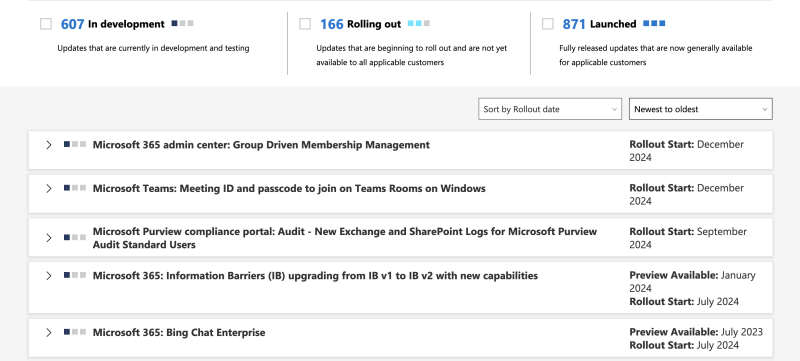
GitHub’s public roadmap
GitHub offers tools and features for code management, collaboration, and to streamline software development work.
Their public roadmap clearly communicates upcoming changes and timelines. To prevent misinterpretation, there is a detailed guide on how to understand and use the roadmap, including a disclaimer.
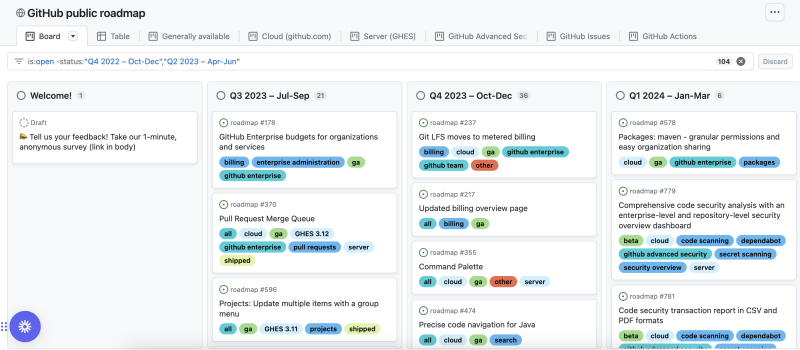
Conclusion
Product roadmaps are indispensable tools for enterprise product managers, playing a pivotal role in guiding businesses towards their goals. Enterprise companies, given their scale and diverse stakeholder landscape, have unique roadmap needs.
Key practices for crafting enterprise product roadmaps include prioritizing quality over quantity, tailoring roadmaps for executive audiences, focusing on key initiatives, timelines, and alignment with departmental goals, and utilizing timeline-based roadmaps to clarify delivery expectations.
Common pitfalls to avoid include fixating on feature-based roadmaps and not keeping roadmaps up to date when initiatives change, which erodes stakeholder trust.
There are pros and cons of sharing enterprise roadmaps publicly. Balancing transparency with strategic protection is key, ultimately helping enterprise product teams and businesses navigate the complexities of their unique environments while serving their customer base.

Quadri Oshibotu

Read also



Build great roadmaps

Experience the new way of doing product management



